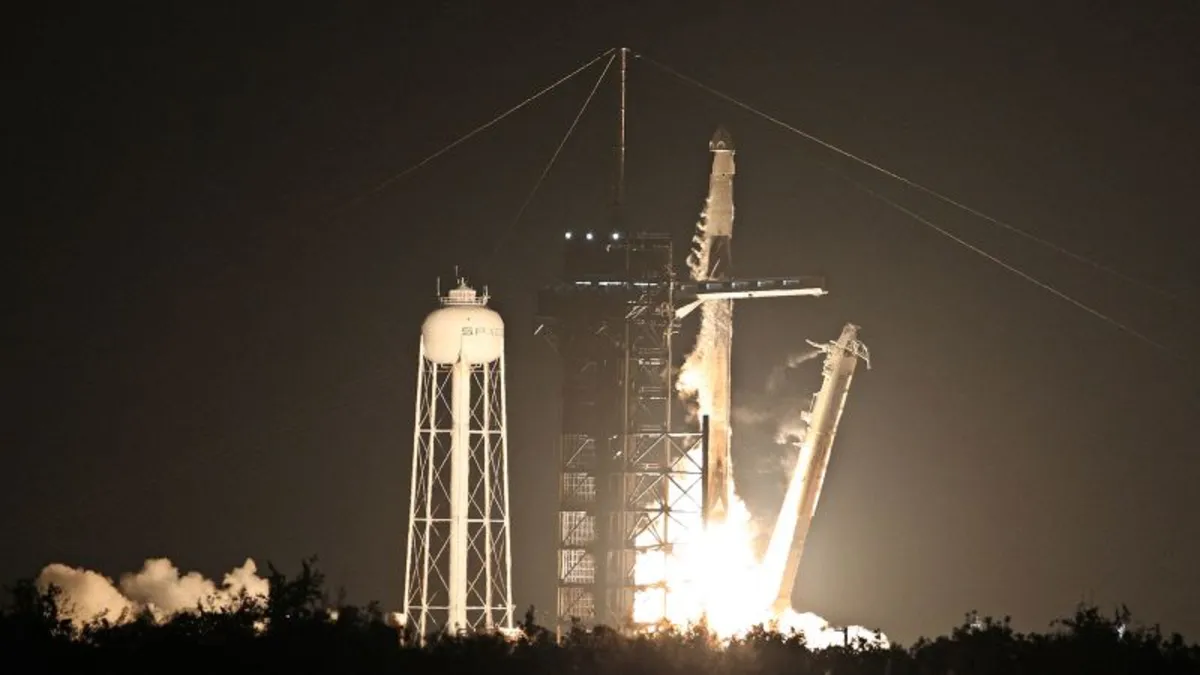
On Monday evening, SpaceX achieved a remarkable milestone by launching its latest mission, designated Fram2, from the iconic NASA's Kennedy Space Center in Florida. The mission features a Crew Dragon spacecraft carrying a cryptocurrency billionaire, Chun Wang, alongside three fellow adventurers. This groundbreaking journey promises to orbit directly above Earth’s North and South poles—a feat that has never been attempted before.
The Fram2 mission lifted off at approximately 9:46 p.m. ET, utilizing SpaceX’s powerful Falcon 9 rocket. The trajectory of this mission required the rocket to fly south, marking a significant departure from traditional spaceflights that typically head eastward. This southward path took the spacecraft over Cuba and Panama, as the Falcon 9 propelled the crew into orbit at speeds exceeding 17,500 miles per hour (28,000 kilometers per hour).
Chun Wang, a resident of Malta, made his fortune through successful Bitcoin mining operations and invested an undisclosed amount for this unique space trip. Joining him on this extraordinary adventure are Norwegian film director Jannicke Mikkelsen, German robotics researcher Rabea Rogge, and Australian adventurer Eric Philips. Each crew member shares a profound interest in polar exploration, a theme that resonates throughout the mission.
Launching a mission that orbits both the North and South poles is a complex endeavor. Traditionally, launch sites on the East Coast are designed for eastward trajectories, benefiting from the Earth's rotation. However, the Fram2 mission defies this norm, necessitating a significant expenditure of power to achieve its unique orbit. Dr. Craig Kluever, a professor at the University of Missouri, explained that such a trajectory typically results in a "significant loss of performance" concerning the launch vehicle's capacity to carry mass into orbit.
Despite these challenges, the Falcon 9 rocket successfully propelled the Fram2 spacecraft to its designated orbit. The choice of this particular trajectory appears to be more about creating a distinctive mission than optimizing for scientific research, as most of the 22 planned experiments focus on crew health rather than the flight path itself.
While the exact amount paid by Wang for this mission remains undisclosed, his background as a cofounder of F2Pool—a major player in Bitcoin mining—highlights his significance in the blockchain community. F2Pool accounts for about 11% of the total Bitcoin hashrate, which reflects the computational power used in cryptocurrency mining. Wang's net worth is estimated in the billions, though specific figures are elusive.
The crew members have undergone extensive training in preparation for the Fram2 mission. They have participated in rigorous exercises, including sequestering themselves in harsh environments in Alaska and training at SpaceX’s headquarters in Hawthorne, California. Mikkelsen, who lives near Wang in Svalbard, is an acclaimed cinematographer and director with a focus on documenting extreme environments. She plans to create a film about the mission.
Rabea Rogge, a pioneering researcher, holds the distinction of being the first German woman to fly to orbit. Her expertise lies in navigation and guidance for automated vehicles operating in extreme conditions. Meanwhile, Eric Philips, a seasoned explorer, has completed nearly 30 excursions to Earth's polar regions, describing the environments as "incredibly hostile." He draws parallels between their journey in the Crew Dragon and the harsh conditions faced in polar exploration.
As the crew embarks on their journey, Wang expressed confidence in their training and preparations. He stated on social media, "Now, everything that needs to be done has been done. From here on, it’s just following the procedures." With this historic mission, SpaceX continues to push the boundaries of commercial space travel, demonstrating that private missions can offer exciting and unique experiences.